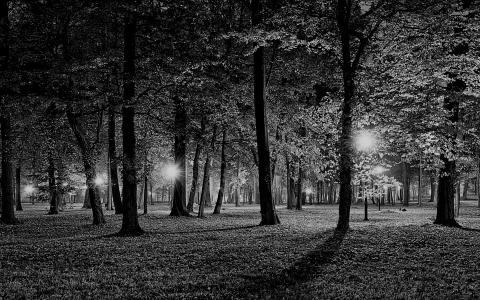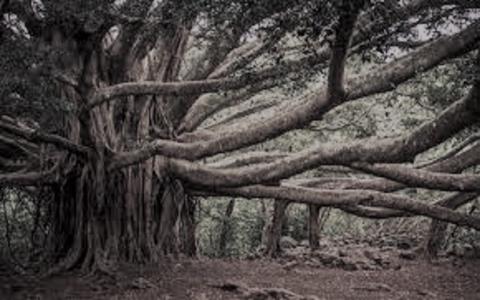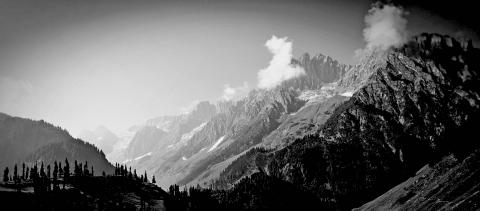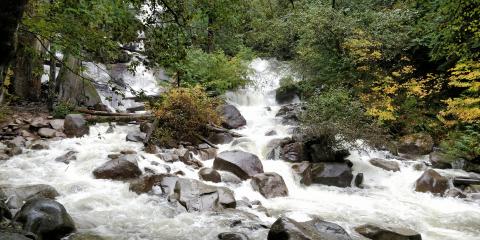February 2023

Chapter 1
There is a great city named Ujjayinī. Its fortresses, moats and citadels resemble the colossal mountain peaks and unfathomable oceans surrounding the great earth. People who set their eyes upon this city’s dwellings made of gold and silver, no longer desire to see even the peaks of Meru and Kailāsa. From every house, one hears the majestic renditions of vedas, the twangs of bows and the melodious strains of music from the Vīṇās. Still...

32.Ākāśamuṣṭihanana-nyāya
Punching the sky! Spending effort on futile things! Punching the sky would just lead to exhaustion but won’t hurt the sky in any manner whatsoever!
33. Ākhvannapiṭaka-nyāya
Ākhu = rat, annapiṭaka = vessel with rice. The rat pushes the vessel and makes it fall due to its desire to have the rice. But it will not place the vessel back as it was before. It doesn’t even have the capability to do so. Likewise someone can...

Those who follow the āsurī form of prakṛti delude and waste themselves.
moghāśā moghakarmāṇo moghajñānā vicetasaḥ
BG9.12
The rākṣasas are cruel and unscrupulous. For them, their bodies are their self and bodily pleasures are the greatest happiness. Naraka and repeated births in lowly creatures are their fate.
Bhagavān expounds upon this dual nature of prakṛti later in the sixteenth chapter.
How can man be liberated if he is being pulled...

‘ಶ್ಲೋಕ’ ಎಂಬ ಪದ್ಯಪ್ರಕಾರವು ಸಾಲಿಗೆ ಎಂಟರಕ್ಷರಗಳಂತೆ ನಾಲ್ಕು ಪಾದಗಳನ್ನುಳ್ಳ ಅನುಷ್ಟುಪ್ವರ್ಗದ ಛಂದಸ್ಸುಗಳಲ್ಲಿ ಒಂದು ಪ್ರಭೇದವಾದರೂ ಇದಕ್ಕೆ ಇಡಿಯ ಆ ವರ್ಗದ ಹೆಸರೇ ರೂಢವಾಗಿದೆ. ಈ ವೈಚಿತ್ರ್ಯಕ್ಕೆ ಕಾರಣ ಅದರ ಪ್ರಾಚುರ್ಯ ಮತ್ತು ವೈದಿಕಸಾಹಿತ್ಯದ ಅನುಷ್ಟುಪ್ಪಿನೊಡನೆ ಅದಕ್ಕಿರುವ ನೈಕಟ್ಯ-ಸಾದೃಶ್ಯಗಳೇ ಆಗಿವೆ. ಸಾಮಾನ್ಯವಾಗಿ ಸಮೂಹವೊಂದರಲ್ಲಿ ಹೆಚ್ಚು ಪ್ರಸಿದ್ಧವಾದ ಪ್ರಭೇದವನ್ನು ಇಡಿಯ ಗುಂಪಿನ ಹೆಸರಿನಿಂದಲೋ, ಅಥವಾ ಆ ಗುಂಪನ್ನೇ ತತ್ಸಂಭೂತವಾದ ಪ್ರಭೇದದ ಹೆಸರಿನಿಂದಲೋ ಗುರುತಿಸುವುದುಂಟು. ಗೋಡ್ರೇಜ್ ಕಪಾಟು, ಜೆ಼ರಾಕ್ಸ್ ಯಂತ್ರ, ಜಾಟರ್ ಪೆನ್ ಮ...

ಈ ಮೊದಲೇ ಕಂಡಂತೆ ನವೋದಯದಿಂದೀಚೆಗೆ ನಮ್ಮಲ್ಲಿ ಸಾನೆಟ್ ಹೆಚ್ಚಿನ ಪ್ರಸಿದ್ಧಿ-ಪ್ರಾಶಸ್ತ್ಯಗಳನ್ನು ಗಳಿಸಿದೆ. ನವ್ಯ-ನವ್ಯೋತ್ತರಯುಗಗಳಲ್ಲಿಯೂ ಈ ಬಂಧವು ಉಳಿದುಬಂದಿದೆ. ಆದರೂ ಲಕ್ಷಣಶುದ್ಧವಾದ ಸಾನೆಟ್ಗಳನ್ನು ನವೋದಯದಲ್ಲಿಯೇ ಕಾಣಬಹುದು. ಈಚಿನ ದಶಕಗಳಲ್ಲಿ ಮಾತ್ರಾಸಮತೆ, ಪಾದಬದ್ಧತೆ, ಪ್ರಾಸಪೂರ್ಣತೆ ಮುಂತಾದ ಶಿಸ್ತಿಲ್ಲದೆ ಸಾನೆಟ್ ತನ್ನ ಲಕ್ಷಣಶುದ್ಧಿಯನ್ನು ಉಳಿಸಿಕೊಂಡಿಲ್ಲ. ಹೀಗಾಗಿ ಲಕ್ಷಣಬದ್ಧವಾದ ಬಂಧಗಳನ್ನೇ ವಿವೇಚಿಸುವ ಈ ಪ್ರಯತ್ನದಲ್ಲಿ ಚ್ಯುತಲಕ್ಷಣಗಳಿಗೆ ಅವಕಾಶವಿಲ್ಲದಿರುವುದು ಯುಕ್ತವೇ ಆಗಿದೆ. ಈ ಹಿನ್ನೆಲೆಯಲ್ಲಿ ನವೋದಯದ ಕೆಲವು ಮಾದರಿಗಳನ...

13. The story of Viśruta
Viśruta was roaming the dense forests of the Vindhyas in search of Rājavāhana, when he saw an eight year old boy standing next to a well, crying. When he asked the boy what aggrieved him, he replied that his old servant who had tried to draw water from the well had fallen in. Viśruta calmed the boy down and pulled the old man out and inquired further. He came to know that the boy was prince Bhāskaravarmā of Vidarbha, and...

Prahasana[1], vīthī, and bhāṇa tickle the insides of the connoisseurs in different ways. Vīthī portrays the commotion, transactions, and humour that take place on the streets of cities. A prahasana may either caricature the base tendencies of important men in the society or may delineate the shallow mannerisms of gamblers, prostitutes, and the like; prahasanas may employ all kinds of vulgar words and mannerisms and may satirically portray the...

7. "Mamātmā bhūtabhāvanaḥ" : Brahma-consciousness is the cause of a jīva's rise and fall. The term bhāvanaḥ can variously mean birth, existence, sustenance, or control. Brahma has embedded the seed of Ṛta (Cosmic order) and dharma in human nature. Ṛta is the law in creation. "Deeds beget appropriate rewards and a jīva has to experience them" is the cosmic law of ṛta. The practical application of ṛta in life is dharma. Dharma and adharma result...
